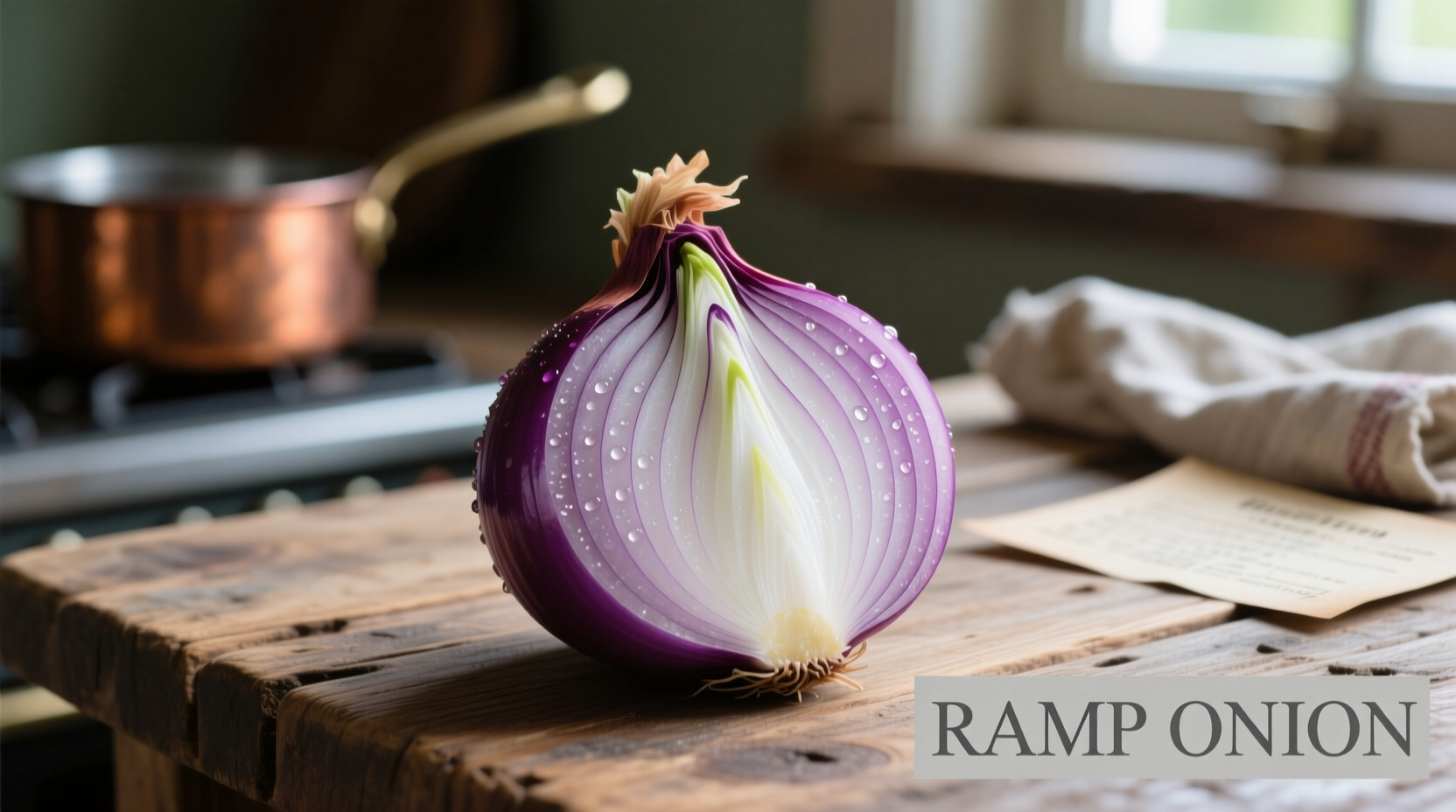What Exactly Are Ramp Onions and Why Chefs Covet Them
If you've encountered the term "ramp onion" and wondered what makes these spring treasures special, you're not alone. Ramps—also called wild leeks, spring onions, or wood leeks—are the culinary world's fleeting spring obsession. Unlike grocery store onions, ramps grow wild in deciduous forests across eastern North America, emerging as one of the first edible plants after winter.
These perennial plants feature a small, purplish bulb resembling a scallion, white stalks that transition to vibrant green leaves, and a distinctive aroma that combines garlic's pungency with onion's sweetness. When foraged sustainably, ramps deliver an unparalleled flavor experience that has earned them a devoted following among chefs and home cooks alike.

Seasonal Availability: Your Complete Ramp Calendar
Ramps follow a precise seasonal rhythm that varies by region. Understanding their growth cycle ensures you'll never miss your chance to enjoy these ephemeral treats:
| Region | Typical Emergence | Peak Harvest | Season End |
|---|---|---|---|
| Appalachian Mountains | Early March | Mid-April | Early May |
| Midwest | Mid-March | Early May | Mid-May |
| New England | Early April | Mid-May | Early June |
This seasonal timeline comes from the USDA Forest Service's foraging guidelines, which monitor ramp populations across North America. Climate change has slightly shifted these windows in recent years, with southern regions seeing earlier emergence while northern areas maintain more traditional timing.
How to Identify and Responsibly Harvest Ramp Onions
Proper identification prevents dangerous mistakes—ramps have toxic look-alikes like lily of the valley and false hellebore. Follow these verification steps:
- Smell test: Crush a leaf—authentic ramps emit a strong garlic-onion aroma
- Leaf examination: Look for 1-2 broad, smooth leaves with parallel veins (not ribbed like false hellebore)
- Bulb check: Mature ramps show a reddish-purple bulb transition to white stalks
- Habitat confirmation: Always found in moist, deciduous forest areas with rich soil
Sustainable harvesting practices are critical for preserving wild ramp populations. The Penn State Extension recommends taking no more than 1 in 20 plants in any patch and never harvesting from the same location two years consecutively. Many conservation organizations now advocate for "leaf-only" harvesting, where you take just one leaf per plant, leaving bulbs intact to regenerate.
Ramp Onion Flavor Profile and Culinary Applications
Ramps deliver a complex flavor journey that evolves as they cook. Their unique taste profile makes them versatile across cooking methods:
- Raw applications: Finely sliced in salads or compound butters (strongest garlic notes)
- Sautéed: White parts first for 2 minutes, then greens for 1 minute (develops sweet onion notes)
- Grilled: Whole stalks brushed with oil (creates smoky-sweet complexity)
- Pickled: Preserves peak-season flavor for year-round use
Professional chefs like those at The Reluctant Forager note that ramp intensity varies by part—bulbs pack the strongest garlic punch, while leaves offer milder onion sweetness. This gradient allows precise flavor control in dishes.
Nutritional Benefits Backed by Research
Beyond their celebrated flavor, ramps offer impressive nutritional advantages according to USDA FoodData Central analysis:
- Rich in vitamin C (35% of daily value per 100g)
- Contains allicin compounds with antioxidant properties
- Excellent source of selenium (20% DV) supporting immune function
- Provides significant folate (25% DV) crucial for cell regeneration
These nutritional benefits peak during early spring harvest when plants concentrate nutrients after winter dormancy. The USDA's nutrient database confirms wild alliums like ramps contain higher concentrations of beneficial compounds compared to cultivated onions.
Perfect Ramp Onion Substitute Guide
When ramps disappear after their brief season, these substitutions maintain similar flavor profiles:
| When You Need | Best Substitute | Ratio | Adjustment Tip |
|---|---|---|---|
| Garlic-onion balance | Scallions + garlic powder | 3:1 ratio | Add 1/8 tsp garlic powder per 3 scallions |
| Earthy depth | Shallots + chives | 2:1 ratio | Sauté shallots first, add chives at end |
| Wild flavor complexity | Leeks + wild garlic | 1:1 ratio | Use young leek greens for best results |
Chef Antonio Rodriguez notes: "The magic of ramps comes from their seasonal uniqueness—don't expect perfect substitutes, but rather creative adaptations that honor spring's fleeting flavors."
Simple Spring Ramp Pasta Recipe
This 20-minute recipe showcases ramps' versatility while preserving their delicate flavor:
- Cook 12oz spaghetti until al dente, reserving 1 cup pasta water
- Sauté 8 sliced ramp bulbs in 2 tbsp olive oil over medium heat for 2 minutes
- Add 1 cup thinly sliced ramp greens and 2 minced garlic cloves, cook 1 minute
- Combine with pasta, 1/4 cup reserved water, and 1/4 cup grated pecorino
- Toss until emulsified, season with black pepper (no salt needed)
- Garnish with ramp flower petals if available
The key is adding greens at the very end—their delicate flavor disappears with prolonged cooking. This technique preserves the volatile compounds that give ramps their distinctive aroma.











 浙公网安备
33010002000092号
浙公网安备
33010002000092号 浙B2-20120091-4
浙B2-20120091-4